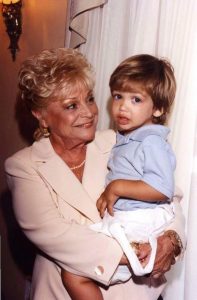Learning about boundaries and consent is a process that takes place over many years. Here are examples of conversations you can have with your children at different ages. I’ve also included examples of how you can model consent as well.
Infant: You’re sitting with a group of friends and family who are adoring your infant and you know that everyone in the room wants to hold your precious baby. You get to say “No.” For example, “I know you’re eager to hold my baby, but I’m still bonding and I’m not comfortable passing her/him around yet. Thanks for understanding.”
Toddler: “I’m washing your vulva now. Your vulva is your private part. There are only three people who are allowed to touch your vulva: You; Me, if I’m helping you clean it but you can say NO if you want to clean your vulva yourself; and the doctor, but only if I’m there.”
When a 2-year-old girls starts to learn body-safety rules, the cornerstone of consent, she might say, “My vagina is mine!” This is a powerful statement and puts into motion the building blocks for a young woman, who might say, “I’m not ready to have sex with you.” Or, “I don’t want to you to touch me like that.”
Young Child: Now consider two children at the playground and one takes a toy from another. This is a great teachable moment about consent. You might say, “Darius, did you ask Gracie if you could use her shovel? Remember, you have to ask first and she has the right to say ‘Yes’ or ‘No.’
Here is how you can tell if a 5-year-old-boy is starting to learn about consent: “Mom, Gracie won’t let me play with her shovel?” “Well, Darius, you have to ask Gracie because it’s her shovel. What could you say to her?” Assuming you don’t stop teaching about consent in the playground, your parenting lessons will produce the young man who is able to say, “May I kiss you?”
 Tween: Ivan and his dad are roughhousing, and Mom hears Ivan say, “Stop,” but the roughhousing continues and Mom also hears Ivan laughing a bit. This is a great opportunity for Mom to say, “Hold up guys. I just heard Ivan say stop, but you’re still wrestling. Remember that we’re a family that values consent. Ivan do you want to keep wrestling? Is there anything in particular you want your dad to stop doing?”
Tween: Ivan and his dad are roughhousing, and Mom hears Ivan say, “Stop,” but the roughhousing continues and Mom also hears Ivan laughing a bit. This is a great opportunity for Mom to say, “Hold up guys. I just heard Ivan say stop, but you’re still wrestling. Remember that we’re a family that values consent. Ivan do you want to keep wrestling? Is there anything in particular you want your dad to stop doing?”
Here’s what a tween might say at this point, at least one who has consistently been taught about consent: “I want to keep wrestling, but I don’t like it when you poke my sides.”
Parents: Parents can model and reinforce consent all the time. Let’s say Dad’s mother comes over and asks Gracie for a hug. Dad can say to his mom, “I know you love to hug Gracie, but we’re teaching her that she gets to choose if and when she gives and receive hugs, so she knows that if she’s ever uncomfortable with touch from anyone, she has our permission to refuse.”
Here’s what a child might say in this situation if they’ve consistently been taught and supported around consent, “Maybe later, Grandma, I don’t feel like it right now.”
Some children are super affectionate and run up to other people to give hugs. These kids also need to be coached to ask first. “Liam, I know you love to give hugs, but it’s important to ask first before you touch someone else because each person is the boss of their own body. How might you ask Levi’s permission?”
Here’s another example of a parent modeling consent. Let’s say you see your child’s coach pat your child on the buttocks, while uttering, “great job!” This is your moment, parents. After practice you might say, “I noticed that you patted my son on his buttock. We are teaching our son about the importance of consent around physical touch and I would appreciate it if you would not do that.” If all parents could do this, we’d welcome a sea change in our culture.



Leave a Reply